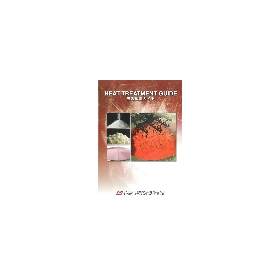What is ultra-high-speed frame thermal spraying (HP-HVOF spraying) - cermet spraying?
"Thermal spraying" is a technique that involves heating materials such as metals or ceramics, turning them into fine particles, and spraying them onto the surface of a substrate using a high-temperature, high-pressure gas flow or plasma. This process allows for the imparting of properties such as wear resistance, corrosion resistance, heat resistance, and thermal insulation to the surface of the substrate. Broadly, thermal spraying can be divided into two categories: one aimed at "high functionality" such as wear resistance, corrosion resistance, heat resistance, and rust prevention, and the other aimed at "repair and regeneration" of worn components. Thermal spraying has a wide range of applications as a surface treatment technology and contributes to improving product functionality and extending lifespan. "HP-HVOF thermal spraying" is one type of thermal spraying technology that utilizes a high-speed, high-temperature gas flow generated by mixing oxygen and fuel and combusting it under high pressure, primarily used for spraying coating materials such as cermets. Therefore, it is also referred to as cermet spraying. It is particularly used to form high-density and high-strength coatings, making it suitable for imparting properties such as wear resistance, corrosion resistance, and heat resistance. It is widely used in fields that require precise and high-performance coatings, playing a crucial role especially in components and structures used in harsh environments.
Inquire About This Product
basic information
■High-Speed Frame Thermal Spraying (HP-HVOF Spraying) - Characteristics of Cermet Spraying 1. High Pressure and High Speed The combustion gas is released at a high speed exceeding the speed of sound (approximately Mach 3 to 5), causing the material particles to collide with the substrate at a very high velocity. This results in a coating that is very dense and has high adhesion strength. Additionally, oxidation and decomposition of the materials are minimized, allowing for maximum utilization of their properties. 2. Low Thermal Impact The sprayed material is only partially melted or softened, minimizing the thermal impact on the substrate. 3. High Density and High Hardness Coating A dense coating with few pores can be formed, offering excellent corrosion resistance and wear resistance. 4. Wide Range of Usable Materials A variety of materials, including metals, alloys, and tungsten carbide (such as WC-Co), can be applied.
Price range
P3
Delivery Time
Applications/Examples of results
■High-Speed Frame Spraying (HP-HVOF Spraying) - Applications of Cermet Spraying - Wear-resistant coatings Turbine blades, pump parts, rollers, sprockets, etc. - Corrosion-resistant coatings Piping in chemical plants, marine structures, oilfield equipment. - Heat-resistant coatings Parts of gas turbine engines, high-temperature components in aerospace. - Hard coatings Protection of tools and molds using hard materials such as WC-Co (tungsten carbide-cobalt).
Company information
At Kyoshin Surfacing, we utilize surface modification technologies such as "thermal spraying" and "build-up welding" to add functions tailored to specific purposes such as "wear resistance," "corrosion resistance," "heat resistance," and "rust prevention" to areas of products and production equipment that require surface modification. This contributes to cost reduction for our customers through extended product lifespan. We have established a comprehensive system that covers everything from design and engineering to production and machining. In 2024, we were selected as one of the "100 Representative Companies of Hiroshima." *ISO 9001:2015 certified *Thermal spraying is a technique that involves heating materials such as metals or ceramics, turning them into fine particles, and spraying them onto the surface of a substrate using a high-temperature, high-pressure gas flow or plasma. This process allows for the addition of properties such as wear resistance, corrosion resistance, heat resistance, and thermal insulation to the surface of the substrate. Thermal spraying has a wide range of applications as a surface treatment technology and contributes to the enhancement of product functionality and lifespan. *Build-up welding is a technique aimed at repairing worn or damaged parts or reinforcing the surface of components by welding metal onto the base material to increase its thickness.



![[Specification] Rubber Conveyor Belt Repair Paste ELI-FLEX](https://image.mono.ipros.com/public/product/image/145/2000652788/IPROS72738989722621401652.png?w=280&h=280)







